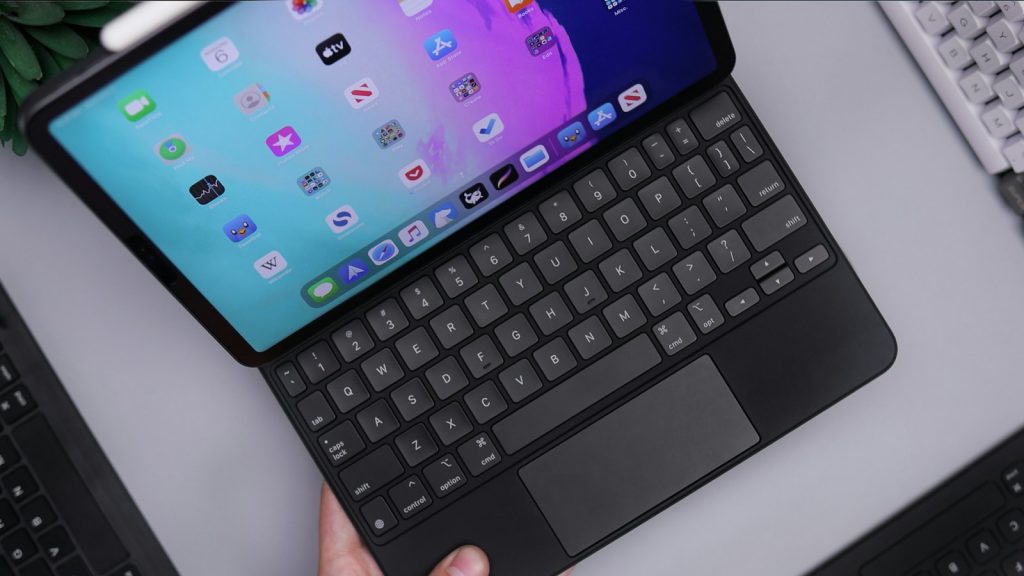7 Steps to Troubleshoot Third-Party Keyboard Apps on iPhone and iPad

Delete Third-Party Keyboard Apps
If you are experiencing issues with your iPad on-screen keyboard not appearing, a potential culprit might be the third-party keyboard apps installed on your iPad. It includes apps such as Gboard, SwiftKey, and others. These apps may create complexities with Apple's stock keyboard and cause it to malfunction. It is advisable to deactivate or completely uninstall these keyboard apps to solve the problem.
Uninstalling Third-Party Keyboard Apps
Here is a detailed step-by-step guide to doing so. First, you will need to open the Settings app on the iPad. Following this, scroll down and select General. From the list of options, choose 'Keyboard.' A submenu will open, which will include the option 'Keyboards.' Select it and swipe left on the keyboard that you want to remove. Finally, hit the Delete option to uninstall the problematic keyboard.
Reinstalling the third-party keyboard app
Successfully uninstalling the third-party keyboard app should hopefully resolve your issue with the iPad on-screen keyboard. However, if you still want to use the third-party app, you may choose to reinstall it. Visit the App Store and search for the keyboard app you want to reinstall. Click "Get" or "Install" to download the app again. It's always suggested that you update third-party apps regularly since updates may include bug fixes, including the issues that could have caused the keyboard to crash in the first place.
Restart your iPhone or iPad
If your iPad on-screen keyboard fails to appear, another potential solution could be restarting your device. A simple reboot can often fix minor software bugs and glitches, including issues with keyboards. The process to restart your device may vary from an iPhone to an iPad and also depends on your model.
Restarting your iPhone
Initiate this operation by long-pressing the side and volume up buttons together if your iPhone model has Face ID. A shutdown menu will appear. For models with Touch ID, merely holding the power button will reveal the shutdown menu. Alternatively, you can accomplish the same task through the Settings app. After shutting down, simply press the power button until you see the Apple logo, signifying that your iPhone is restarting. This could rectify the problem with the on-screen keyboard.
Restarting your iPad
Restarting an iPad is similar but slightly different for iPads with and without a home button. For iPads lacking a home button, simultaneously press and hold any volume and power buttons. The power off slider will appear. Use it to turn off your iPad. After waiting 30 seconds, press the top button to turn your iPad back on. If your iPad has a home button, the process involves pressing the top button until the power off slider appears. Following these steps can resolve any issues you face with your on-screen keyboard.
Update the Software of your iPhone and iPad
The iPhone or iPad on-screen keyboard not appearing might be due to outdated operating software. Keeping your devices updated to the latest software version is always recommended to ensure the smooth functioning of all its features. These updates carry bug fixes and improvements that might solve the keyboard issue.
Guidance to Update Software
Here is a simple step-by-step guide to update the software of your device. Grab your device and go to the 'Settings' app. Scroll down until you find the 'General' option and tap on it. In this section, you'll see an option labeled 'Software Update,' select that. Here, you can see if any updates are available for your device. If there's an available update, tap on 'Download and Install.' The device will now fetch the update and install it. After the update, check if the keyboard issue has been resolved. Please note that your device might restart a couple of times during the update, which is normal.
Reset Device Settings to Factory Default
If none of the previous solutions were effective, you could consider resetting your device settings to factory defaults. Sometimes, unusual settings can meddle with the functionality of the stock keyboard, leading to it disappearing. By restoring your device to its original settings, you might just resolve this issue.
Steps to Reset Settings
The process of resetting your iPhone or iPad settings is straightforward. First, navigate to your device Settings and then tap on 'General.' Look for the 'Transfer or Reset iPhone/iPad' option and tap to proceed. Scroll down to the 'Reset' option and then select 'Reset All Settings.' You will need to confirm this action by entering your passcode.
However, it's worth noting that although resetting all settings doesn't delete any data or media, it does erase your keyboard dictionary, home screen layouts, network settings, and location settings, among other configurations. Therefore, performing a backup on iCloud is always advised if you want to keep these settings. Once the reset is complete, check if your on-screen keyboard functions correctly.
Delete Your Keyboard History
Another way to solve the iPad on-screen keyboard issue is by deleting your keyboard history. Some corrupted data stored in your keyboard's history may be causing the malfunction, hence rendering it invisible.
Refreshing the Keyboard App
By clearing your keyboard history, you refresh your keyboard app, potentially resolving issues caused by corrupted data. Further, this can be coupled with a restart of the particular application wherein the keyboard fails to appear. First, close the application by swiping it from your recent apps menu. After successfully closing it, launch the application again and tap on a text field to activate the on-screen keyboard. If the problem was specific to that app, these operations should typically resolve it.